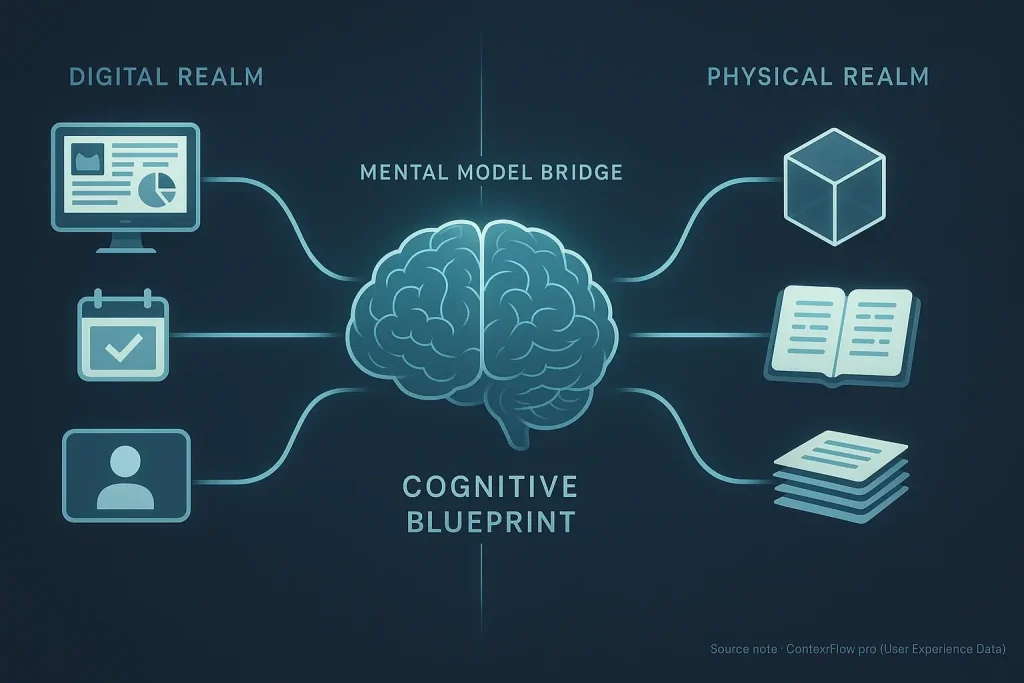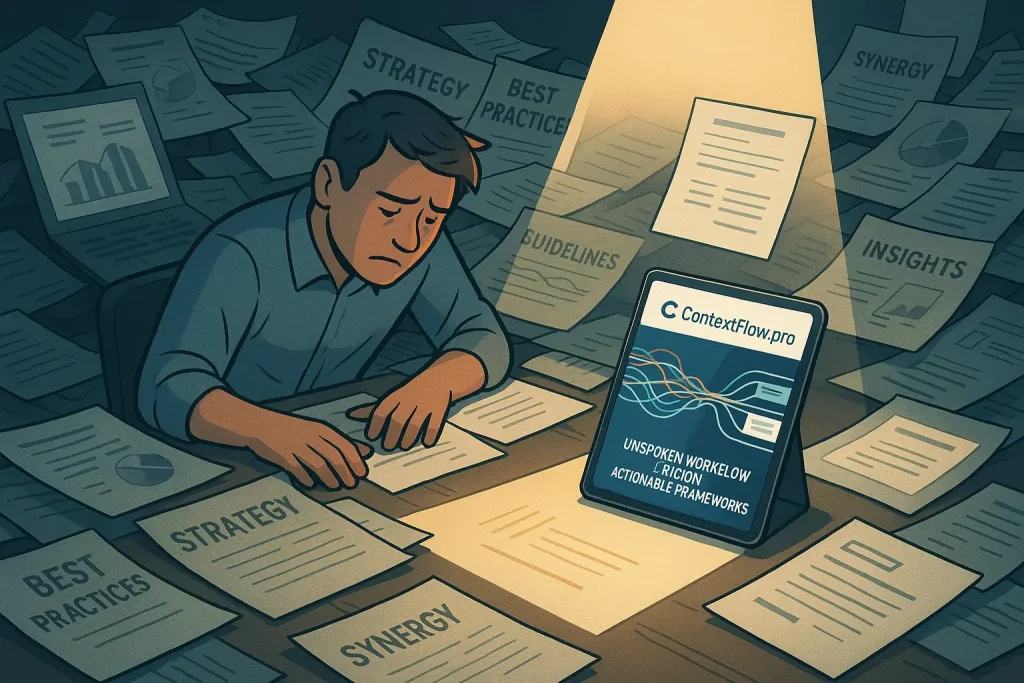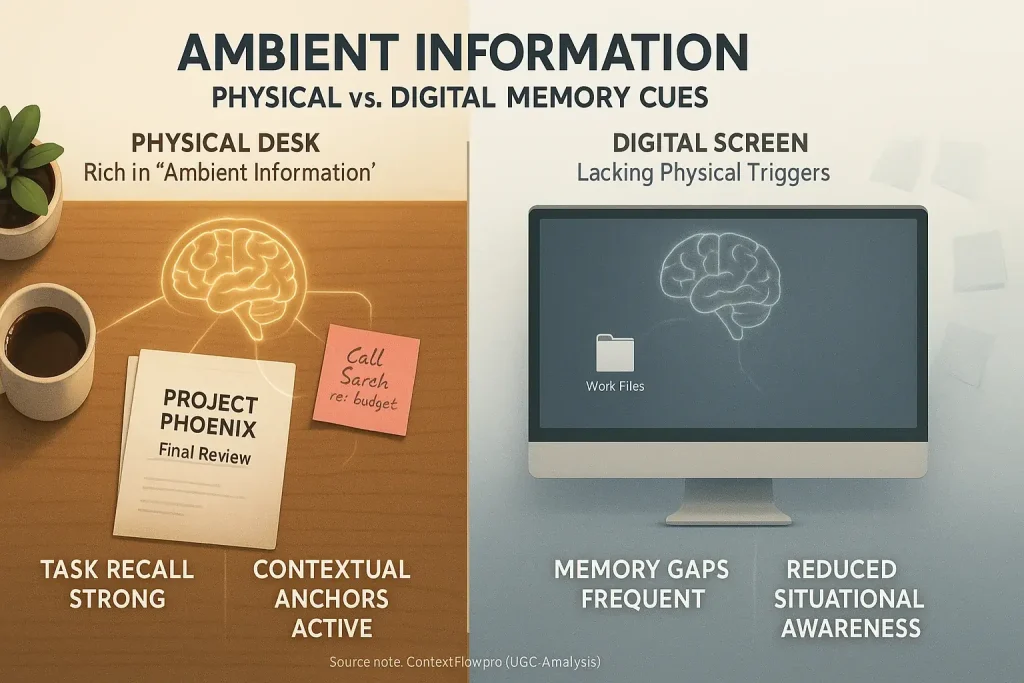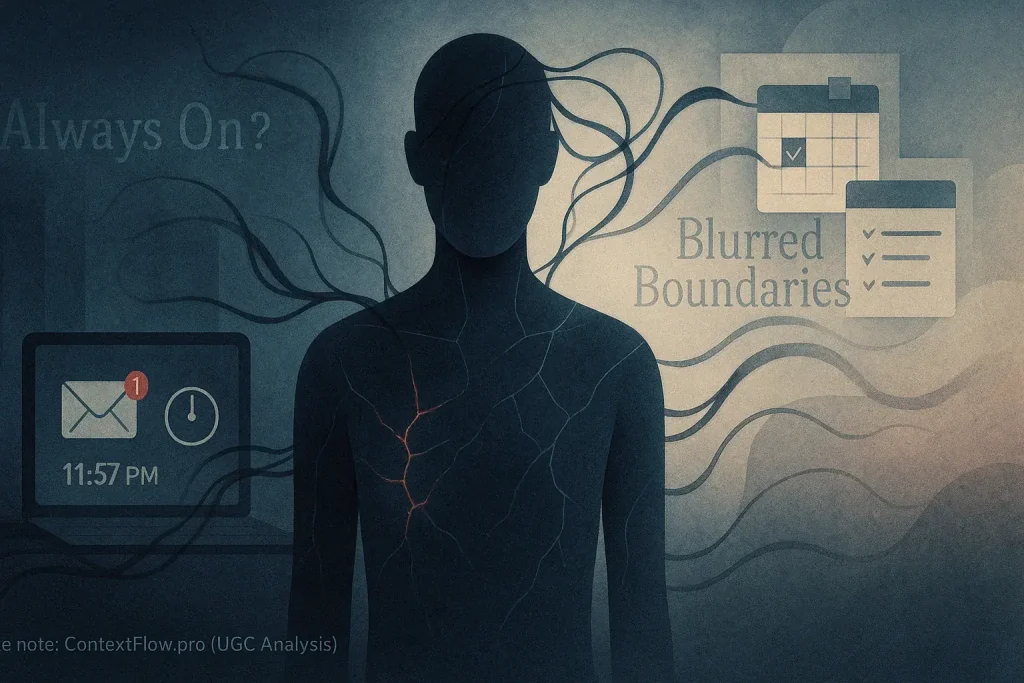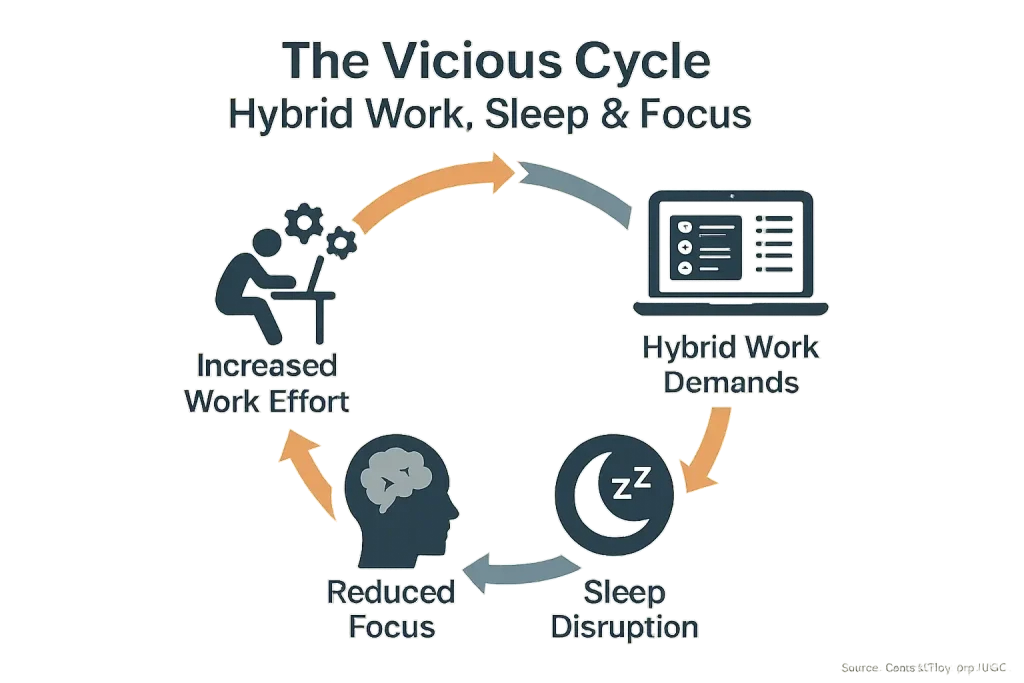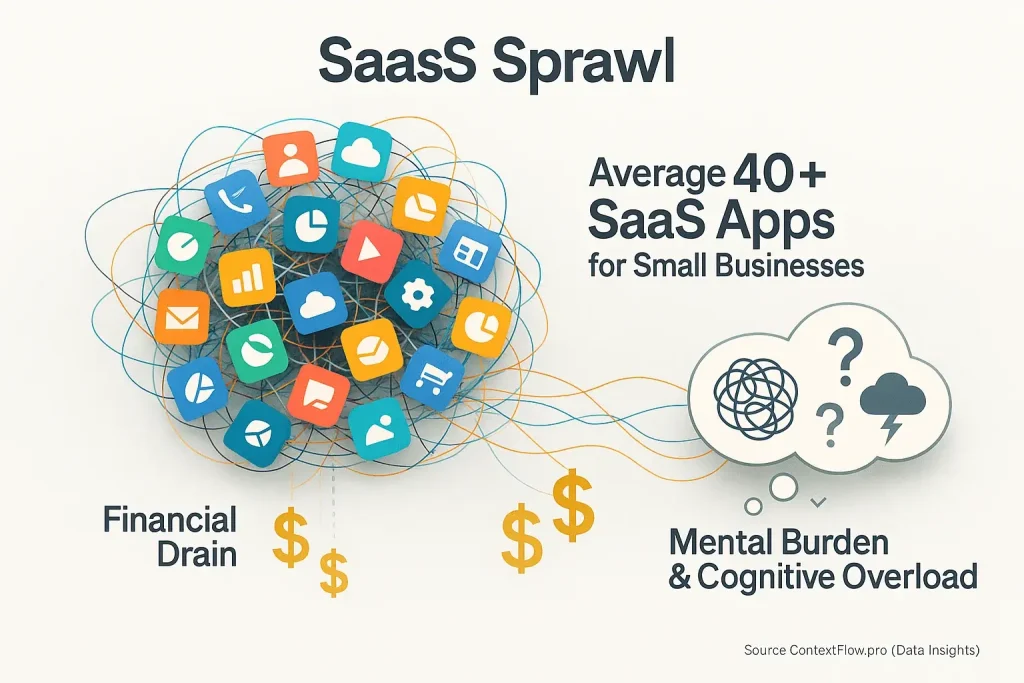The 'Wrong Tool, Wrong Time' Trap: Why Your Hybrid Team Feels Disconnected
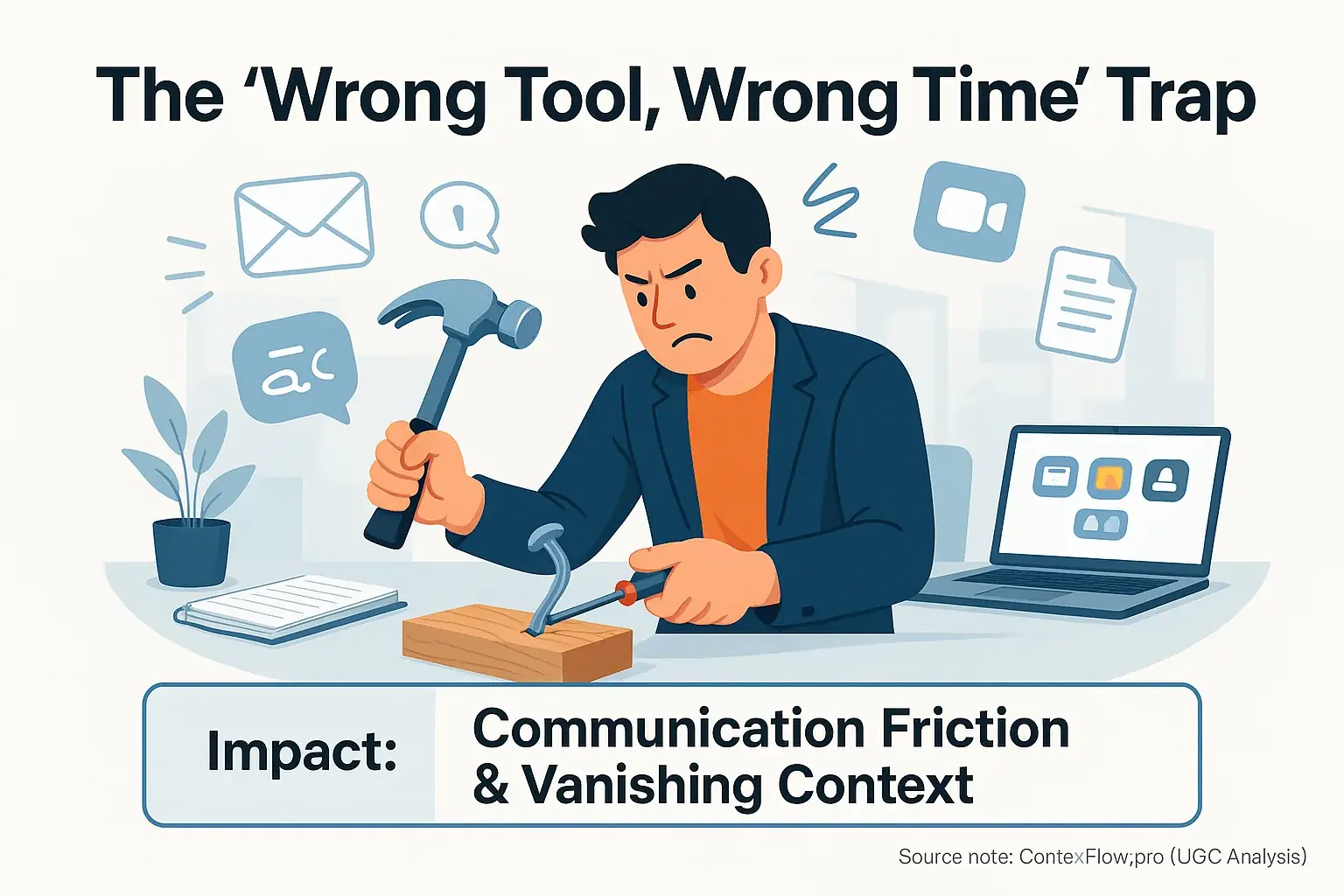
Ever sent an urgent email, then waited hours for a reply? Or attempted to resolve complex issues within a frantic chat thread? This "wrong tool, wrong time" scenario is a common experience. It silently sabotages productivity within many hybrid teams. Hybrid workflows suffer greatly.
This mismatch creates significant communication friction. Context vanishes. Users frequently describe a state of constant miscommunication. It is like teams are attempting to speak different languages. "I thought I sent that important memo!" is a common cry of frustration. "Why is this critical discussion happening in a general chat channel?" many professionals wonder. The tools themselves are rarely the sole issue; their inconsistent or inappropriate application causes the real problems.
The good news? This challenge is not an unsolvable mystery. Understanding these user-reported pitfalls provides the essential first step. Teams can then craft smarter, more effective communication protocols. Context flow improves. Efficiency rises.
Your Hybrid Communication Agreement Builder: Find the Right Tool for Every Message
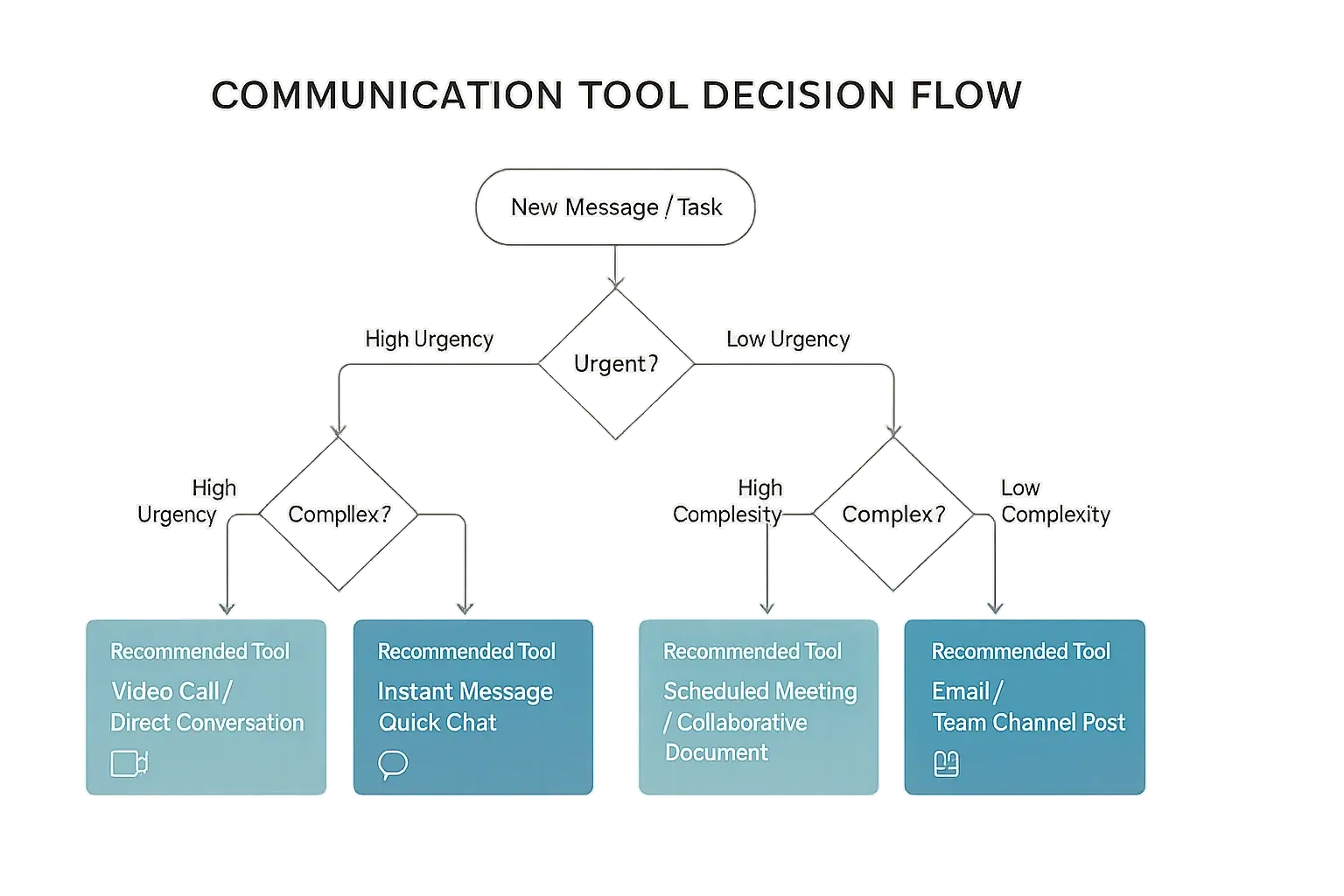
Find the Right Tool for Your Message
This tool helps your team build understanding. You defined which channel suits which message. Such clarity prevents frustrating daily friction. Work flows better.
Teams create these agreements. Miscommunication plummets. Our research into UGC confirms this: efficiency often skyrockets. Imagine: everyone finally speaks the same language to get work done.
The Email for Urgent Matters Paradox: Why It Fails & What Users Say
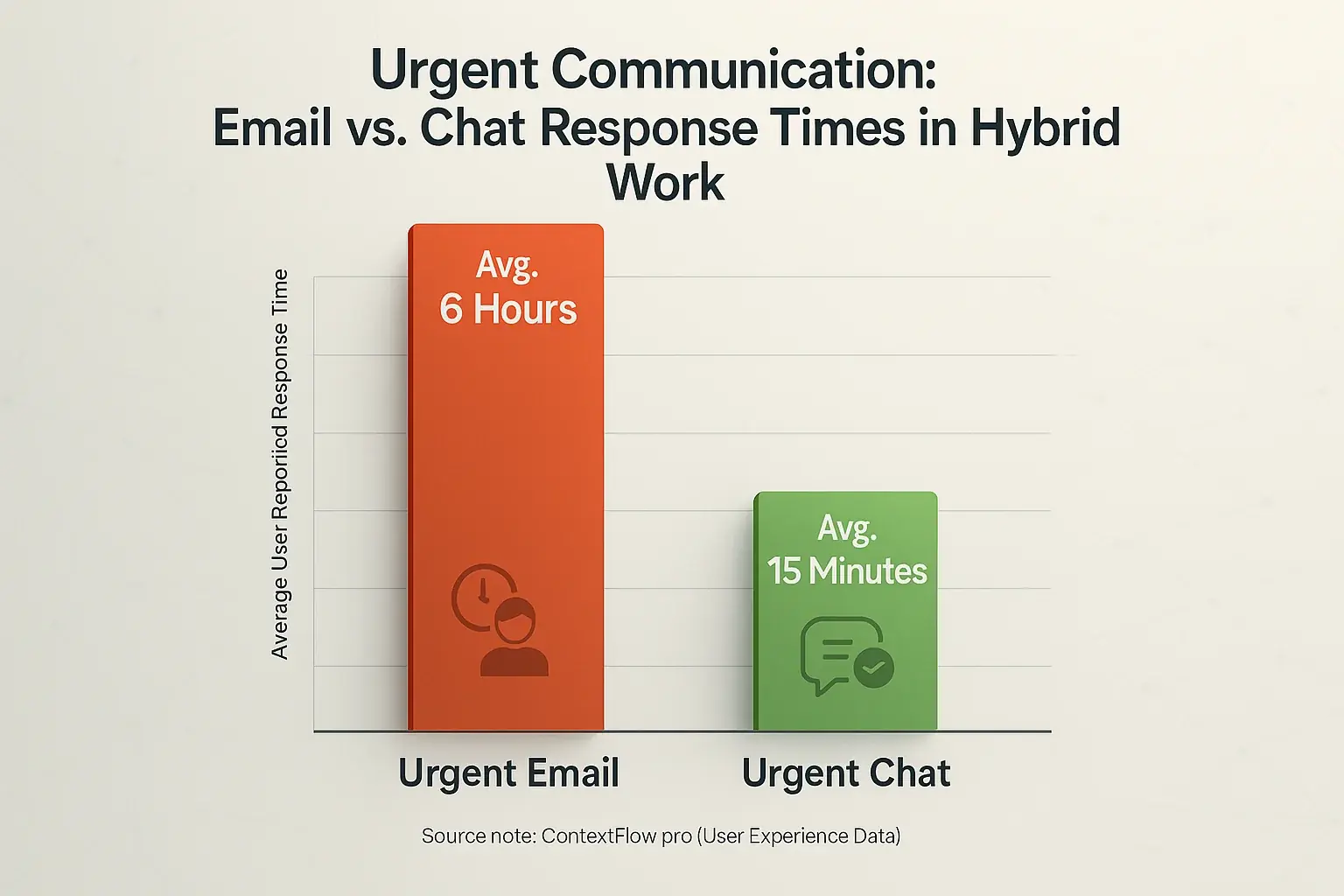
You have a critical deadline looming. A quick question blocks your progress. You hit 'send' on an email to a teammate. Then you wait. And wait. Sound familiar? This scenario plays out constantly in hybrid teams. Emails, by their very nature, are asynchronous communication tools. They often get buried under an avalanche of other messages, delaying vital information.
Many users confess a widespread habit. They treat email inboxes like to-do lists, not instant messengers. This mental organization means "urgent" email flags often lose their power. Our analysis of user experiences reveals a stark reality. "Urgent" emails frequently suffer significant response delays. This contrasts sharply with the quicker turnaround users report for direct chat messages when true immediacy is needed.
This fundamental mismatch between sender expectation and recipient behavior fuels intense frustration. Missed deadlines become more common. Users report constant context switching, anxiously refreshing inboxes for that critical reply. This cycle erodes focus. It is a silent killer of team flow and a primary source of communication inefficiency in hybrid settings.
The fix for this paradox is surprisingly straightforward. User confessions point to a clear path. Reserve email for non-urgent updates and formal documentation. For true, time-sensitive urgency, teams consistently find more effective communication channels deliver the speed required.
The 'Chat for Deep Discussions' Trap: When Quick Pings Kill Complex Context
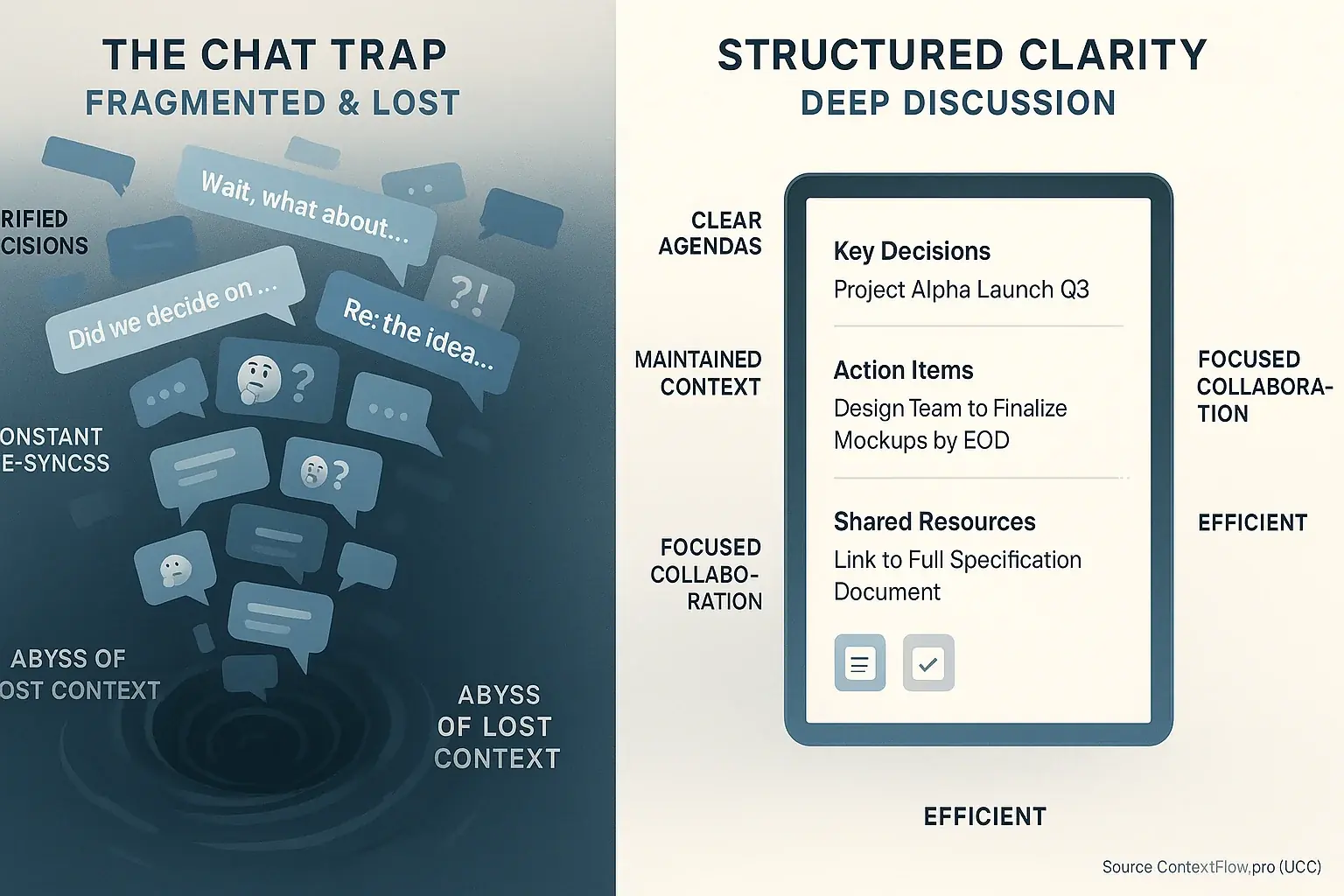
You have a complex problem. A nuanced idea requires exploration. A project update needs genuine discussion. So, you drop it into the team chat. What unfolds? Often, chaos. Chat platforms facilitate quick, transactional messages effectively. They are not designed for deep, multifaceted dives.
Our analysis of user experiences uncovers a widespread issue. Complex thoughts frequently get lost in the relentless scroll. Significant decisions become buried under a stream of emojis and brief replies. Users report this is like attempting to build a complex structure with temporary notes; the foundational plan quickly vanishes. Information fragmentation within chat tools is a well-documented outcome when tackling complex subjects.
This digital scattering forces individuals to constantly reconstruct the discussion's context. This repeated effort consumes significant time. Decision quality erodes. It directly feeds the "I forgot what we decided" problem, a common lament in teams relying heavily on chat for complex coordination. Poor integration of these tools often means critical follow-up and context simply fall away.
For deep discussions, user reports consistently champion dedicated environments. Scheduled meetings with published agendas offer necessary structure. Collaborative documents maintain context integrity over time. This strategy respects team members' focus and cognitive load. Choosing the right tool prevents the information loss many experience when chat is misused for complex collaboration.
The Missing Manual: Why Lack of Clear Tool Guidelines Fuels Hybrid Frustration

Imagine this team. Everyone picks their favorite tool. For every single message. One colleague uses email for urgent tasks. Another pings constantly on chat. A third posts lengthy updates inside shared documents. The result? Pure chaos. Without clear rules, teams descend into widespread communication confusion.
Users often report a silent frustration. "I just wish someone would tell me where to put this!" many silently plead. This lack of a "communication manual" fuels duplicated efforts. Missed messages also become common. It is death by a thousand pings. This erodes team efficiency significantly.
The good news? This problem is entirely fixable. Teams proactively define their tool guidelines. They communicate these expectations clearly. Clarity dramatically improves. Efficiency rises. Setting clear expectations is the central goal. This is not about limiting choice; it is about enabling focus.
Beyond the Rules: Understanding User Preferences for Hybrid Communication Tools
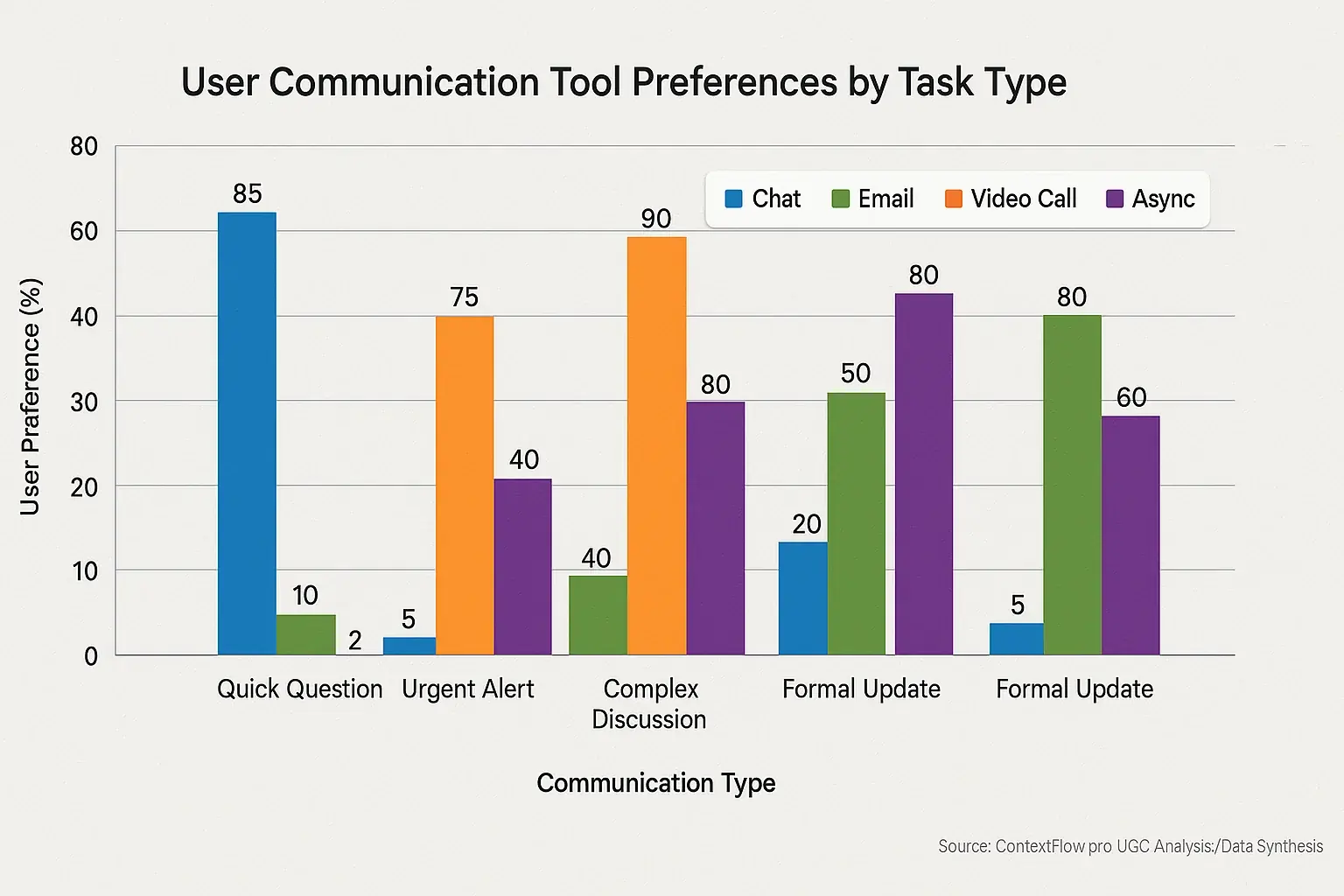
Formal guidelines shape hybrid communication. True. Yet, individual preferences significantly influence tool choices. People often develop favorites. Some users gravitate towards chat for nearly all interactions. Others consistently prefer email for its structured nature. Understanding these user-driven nuances is absolutely crucial for effective team communication.
Our deep dive into user feedback uncovers clear patterns in tool selection. For quick, informal pings, team chat platforms overwhelmingly dominate. Users value their immediacy. When messages require a formal record or detailed explanations, email frequently becomes the preferred channel. Our data synthesis also highlights a strong user reliance on video calls. These are the go-to for real-time problem-solving and complex discussions needing immediate, interactive engagement.
The real challenge emerges. It involves integrating these varied preferences into a cohesive team strategy. The goal is not preference elimination. Instead, teams must find a balance. This sweet spot allows individual comfort to meet collective clarity. User reports often highlight a simple solution: a brief team discussion about communication preferences can proactively resolve many unspoken tensions and streamline workflows.
Acknowledging these preferences delivers tangible benefits. Teams respecting diverse communication styles within a flexible framework experience smoother interactions. This approach directly reduces operational friction. It also boosts team morale. Why? Because individuals feel their needs are heard and genuinely understood by their colleagues.
Crafting Your Team's Communication Agreement: A Path to Clarity & Flow
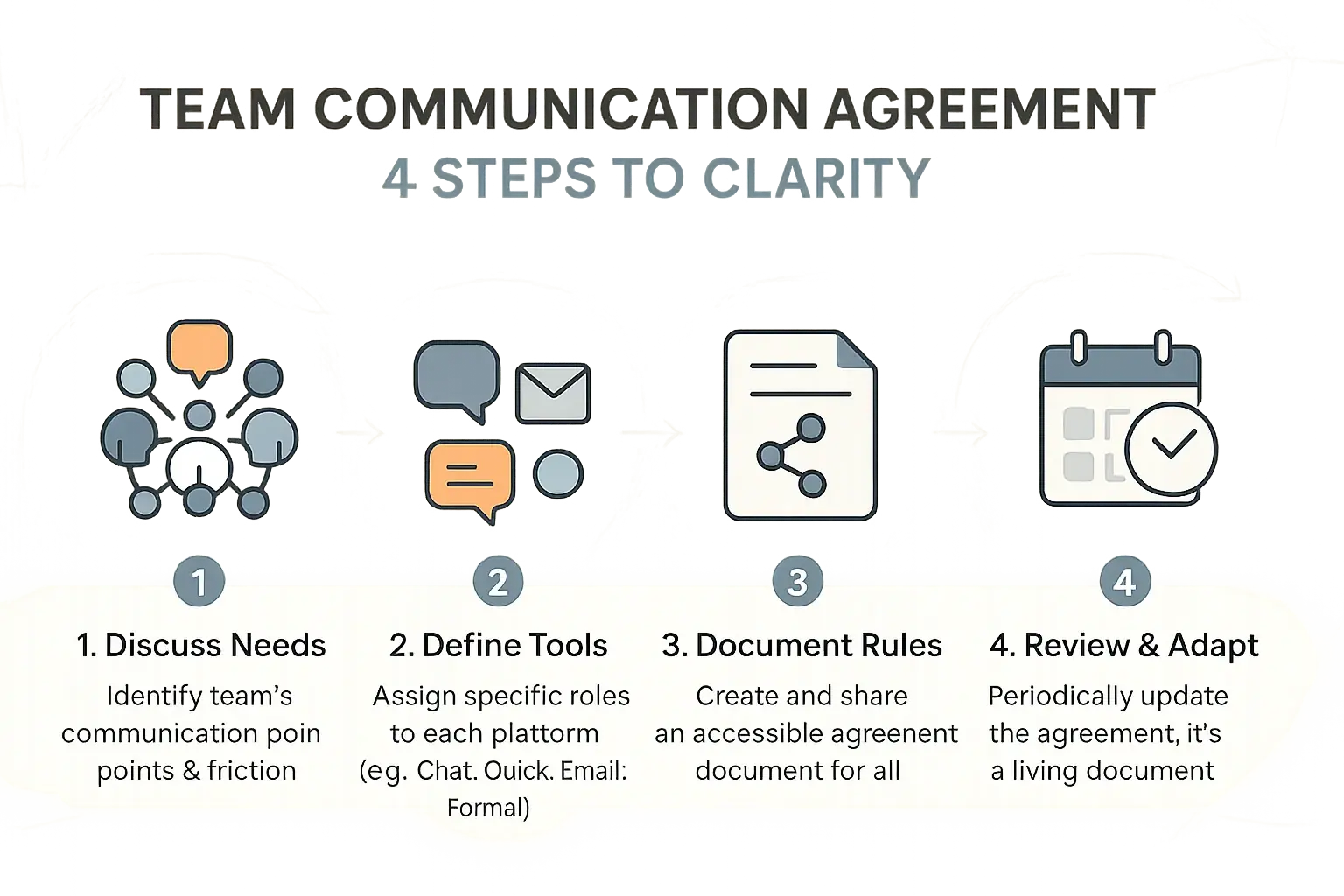
Ready to cut through communication chaos? A simple, agreed-upon communication protocol can transform your team's workflow. It is not about rigid rules. It is about shared understanding. This builds team cohesion.
Teams build effective agreements through clear steps. ContextFlow.pro's research into team dynamics highlights these critical actions for workflow optimization:
- Discuss Current Frustrations. What truly causes daily friction? Many teams report that unclear channels for urgent matters create significant delays. Identifying these pain points is vital.
- Define Tool Roles. Which platform serves which communication need? For instance, designate chat for rapid, informal questions. Reserve email for documented, formal updates. This clarity reduces cognitive load and improves efficiency.
- Document & Share Widely. The new team protocols must be easily accessible. All team members need constant visibility. A central, shared location works best.
- Review & Adapt Regularly. Workflows evolve. The agreement must too. Schedule periodic reviews to ensure it remains relevant and effective. It is a living document.
The journey to a clear agreement often reveals an unspoken truth. Starting the conversation presents the biggest initial hurdle for many teams. Our user experience analysis confirms this. Once adopted, however, the positive impacts are swift. Teams report less guesswork. More focused work follows. This fosters psychological safety. Everyone understands the communication landscape.
Empower your team. Communicate with deliberate purpose. This straightforward agreement marks a powerful step. It moves you towards achieving true context flow. Your hybrid work environment can become genuinely productive.
Beyond the Mismatch: Building a Culture of Intentional Communication
Mastering hybrid communication is not about having the most tools. It is about using the right tool at the right time. This marks a fundamental shift. Reactive messaging yields to intentional interaction.
When every message serves its purpose, context flows freely. You achieve more than solving one problem. You are building a more productive, connected, and less frustrated hybrid team. It is time. Communicate with purpose.

